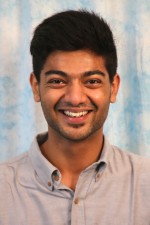
Carnegie Mellon University
12:30 pm to 1:30 pm
Abstract:
Robotic navigation algorithms for real-world robots require dense and accurate probabilistic volumetric representations of the environment in order to traverse efficiently. Sensor data in a Simultaneous Localisation And Mapping (SLAM) context, however, always has associated acquisition noise and pose uncertainty, and encoding this within the map representation while still maintaining computational tractability is a key challenge in deploying these systems outside of controlled laboratory settings.
The occupancy inference problem is essentially a high dimensional search in the space of all maps. By incorporating the physics of sensor formation using forward models, it is possible to reason in terms of the likelihood of the measurements for a given map hypothesis to obtain a solution that explains the noisy observations as well as possible. However, this approach to mapping has historically been prohibitively expensive to compute in real-time. Thus, conventional robotic mapping algorithms have primarily chosen to work with limiting assumptions to maintain tractability.
In this thesis we present a framework that explicitly reasons about the conditional dependence imposed on the occupancy of voxels traversed by each ray of a depth camera as a Markov Random Field (MRF). The tight intra-and inter-ray coupling explicitly incorporates conditional dependence of the occupancy of individual voxels as opposed to making independent log-odds Bayes filter updates as occupancy maps do. Visibility constraints imposed by using a forward sensor model enables simplification of the otherwise high dimensional inference. The forward model allows incorporating learnt sensor noise characteristics for accurate inference. Instead of marginalising sensor data immediately, data from camera poses is retained, and can be added, moved, or removed in an ad-hoc fashion whilst performing inference. In order to avoid prohibitive sensor data storage costs, an extension to using the framework in a submapping setting with pose graphs is presented with sensor data marginalisation deferred until as late as possible. Marginalisation is performed using succinct parametric Gaussian distribution representations. Finally, Gaussian mixture model map representations are then demonstrated to be capable of providing robust localisation in multi-hypothesis settings. All of this is made real-time feasible by the inherent parallelisability of the proposed framework and is implemented on GPUs.
More Information
Thesis Committee Members:
Nathan Michael, Chair
Martial Hebert
Michael Kaess
Ali Osman Ulusoy, Microsoft Hololens
